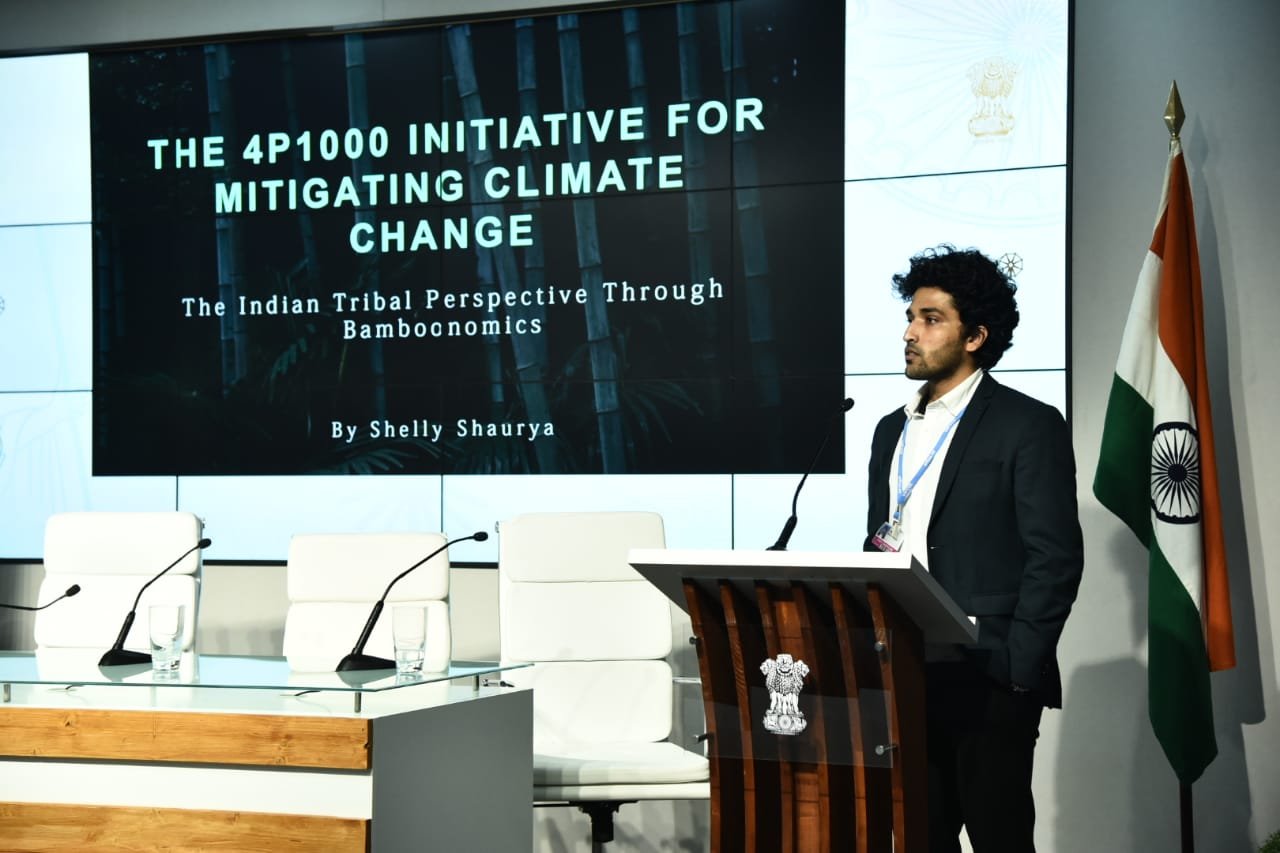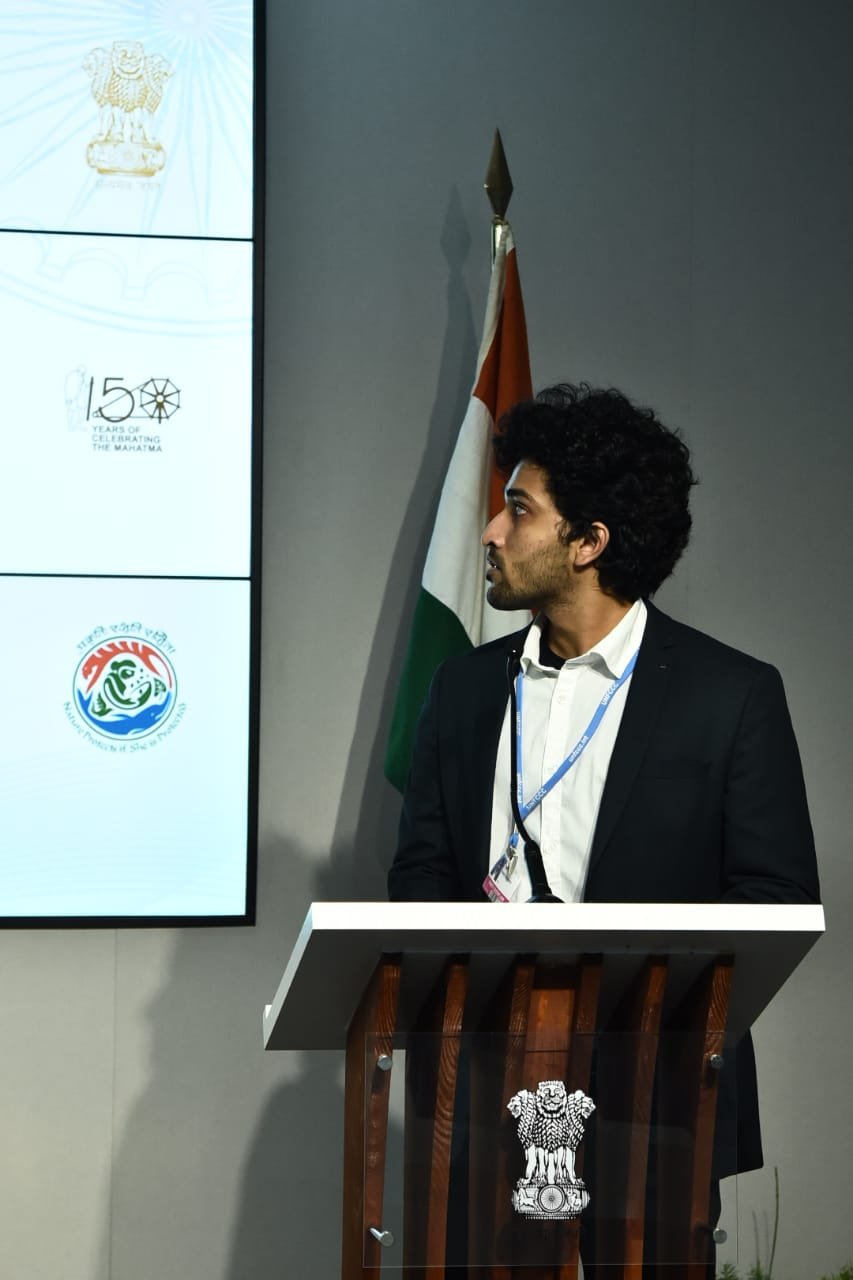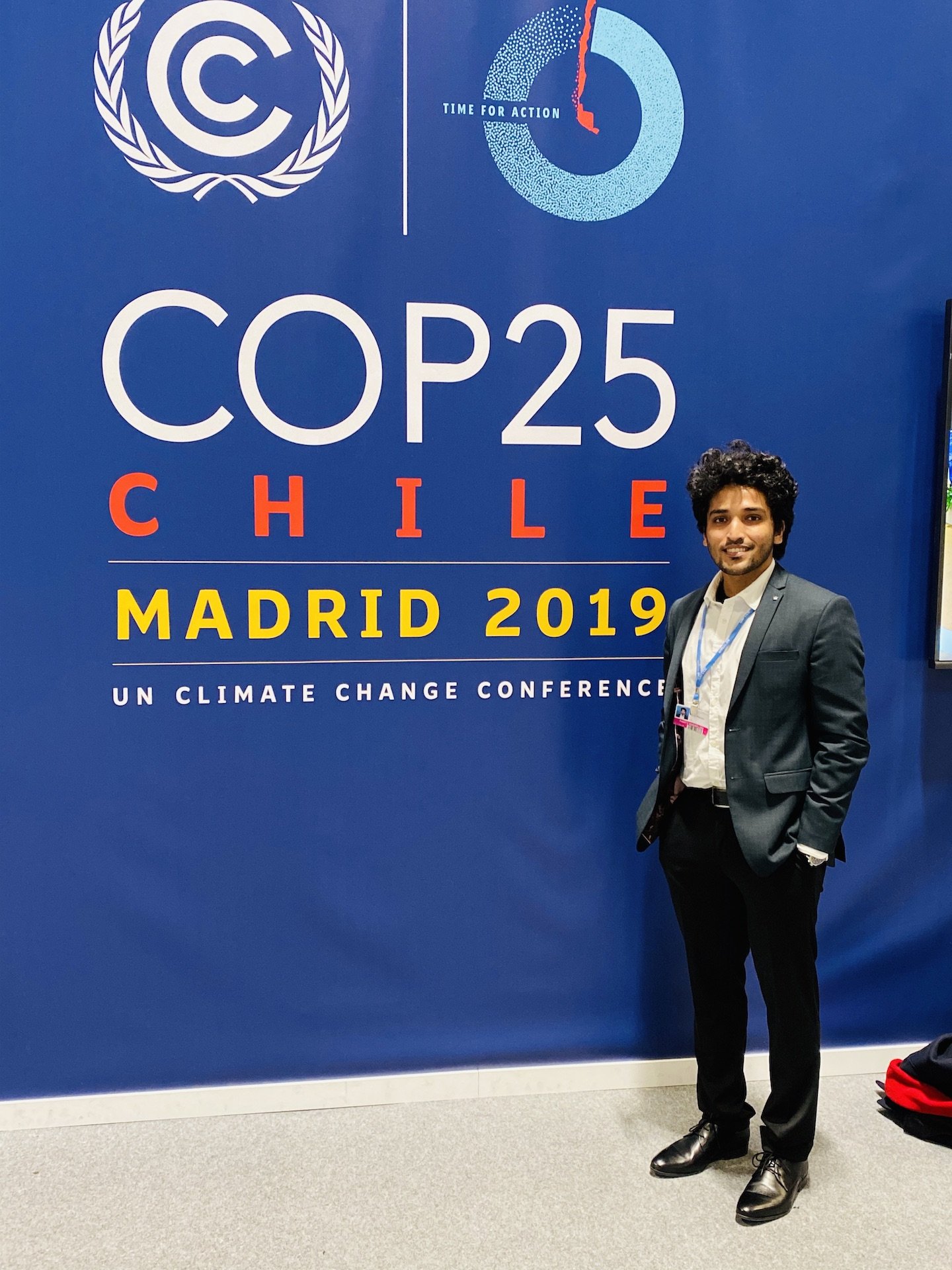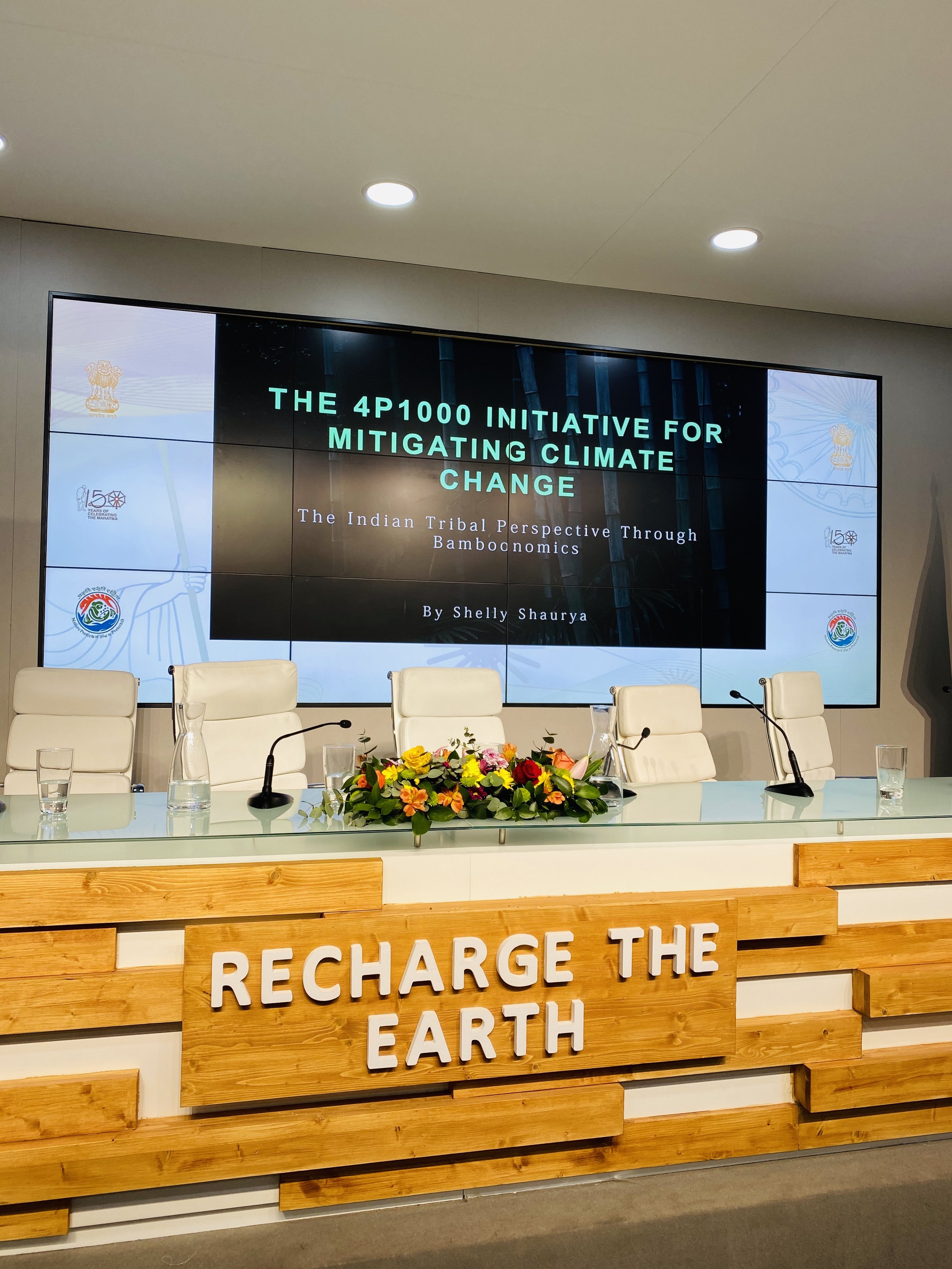Our work:
We made a presentation on the 4P1000 Initiative to mitigate climate change: The Indian Tribal perspective Through Bamboonomics. This is something that we have been working on with TRIFED. It was an honor to give a talk on this at the United Nations Framework Convention on Climate Change (UNFCCC) COP 25 in Madrid, Spain.
Background material:
There is a new global role for the Indian tribals in achieving the national and global Sustainable Development Goals (SDGs). They have a vital role to play in combating desertification and mitigating climate change. The Ministry of Tribal Affairs, Government of India’s Manufacturing and Marketing arm, called TRIFED (Tribal Cooperative marketing Federation of India Ltd.) together with GIZ has already taken several major steps in this direction for launching Bamboo based tribal enterprises. Firstly, they have hired Mr. Shelly
Shaurya, author of the Amazon’s No.1 best-Selling book titled “ Bamboonomics: The Tall Grass Comes of Age”, who had given them a report on “Bamboonomics: Aspirations in a Bamboo Regime” for making a “Bamboonomics Roll Out Plan” for TRIFED. Then after the plan was ready and approved, it was launched by TRIFED in their National Workshop titled “Bamboonomics: The Roll Out Plan for Tribal Prosperity”. There is a new global role for the Indian tribals in achieving the national and global Sustainable Development Goals (SDGs). They have a vital role to play in combating desertification and mitigating climate change. The Ministry of Tribal Affairs, Government of India’s Manufacturing and Marketing arm, called TRIFED (Tribal Cooperative marketing Federation of India Ltd.) together with GIZ has already taken several major steps in this direction for launching Bamboo based tribal enterprises. Firstly, they have hired Mr. Shelly Shaurya, author of the Amazon’s No.1 best-Selling book titled “Bamboonomics: The Tall Grass Comes of Age”, who had given them a report on “Bamboonomics: Aspirations in a Bamboo Regime” for making a “Bamboonomics Roll Out Plan” for TRIFED. Then after the plan was ready and approved, it was launched by TRIFED in their National Workshop titled “Bamboonomics: The Roll Out Plan for Tribal Prosperity” After that TRIFED in collaboration with the GIZ (German Technical Cooperation) participated in UNCCD’s COP-14 and organized a side event “The 4P1000 Initiative: The Tribal Perspective through Bamboonomics” in New Delhi. There they announced that the tribals of India would form the largest movement of tribals for combating desertification (based on the principles of the 4P 1000 Initiative) and mitigating the climate change based on Bamboonomics.
Bamboonomics & the E 3 Solution for Climate Change Mitigation
The theme for the “The 4P1000 Initiative for Mitigating Climate Change: A
Tribal Perspective through Bamboonomics is simple but provides one of the best eco-solutions for mitigating Climate Change. I term it as E 3- Solution for Climate Change Mitigation, for it is ecological (in nature), economical (in implementation) economic (in
improving its practitioners). Bamboonomics is a novel concept that represents an agrarian, predominantly tribal economy and livelihoods based on bamboo and other natural resources. It calls for an innovative and eco- friendly natural resource base development by value addition to the products that can combat desertification and mitigate climate change without sacrificing the
entrepreneurial income of the poor in the name of green eco-development. It also points out serious shortcomings in the existing bamboo policies, provides a framework for changes with a way forward.
India produces 3.23 million tons of bamboo annually covering 8.96 million hectares forest areas and 10.5 million non-forest areas. According to the Forest Survey of India (FSI), in India bamboo grows in 8.96 million hectares of forest area, which constitutes about 12.8% of the total forest area of the country. A substantial number of tribal live in these areas and they cannot be ignored in the climate
change mitigation efforts. The Bamboo can grow again from its same rhizomes, it grows very fast and sequesters more carbon as compared that by trees. This quality makes it a very vital tool in climate change mitigation. It could help India to achieve its tough targets under the “Bonn Challenge“ of bringing 13 mha of degraded land into restoration by 2020 and an additional 8 mha by 2030 at a lesser expenditure as compared to that of tree plantations. India is also felling short of the Climate Change Mitigation targets by 1.1 billion tons of carbon stock. This is where the Bamboonomics pitches in with its bamboo plantations and its derivatives the Bamboo- charcoal and Activated Bamboo Charcoal as proven effective tools in Climate Change Initiatives. They can hold the carbon for thousands of years and increase the land productivity substantially on the application as the soil carbon content is improved. It involves the tribal stakeholders for rehabilitating the degraded land without compromising their livelihood income through bamboonomics. Thus, while doing crucial environmental services, the tribals will earn more through Bamboonomics livelihood systems.
The Indian Perspective towards Climate Change Mitigation is basically based on the Forestry point of view has always been by the way of tree plantations leading to carbon Sequestration and thus mitigating climate Change. One of the off shoots of these tree
plantation activities is arresting the desertification. There are gaps in the Climate Change Program based on the tree plantations and to suggest not only policy changes but a quicker and surer way out based on “4P 1000 Initiative” to support the efforts being made in this arena and at the same time enhancing the income of the poor to almost 4 times of their present livelihoods of the rural and tribal areas. Bamboonomics envisages action on part of the rural and tribal communities through SHGs and proposes to assess the growing stock utilization of bamboo that how much of it could be converted into Bamboo Charcoal (BC) and Activated Bamboo Charcoal (ABC). Once we market it in a sustainable way without compromising the existing livelihood options for the rural and tribal communities and are able to keep the sequestrated carbon stock either in the soil in the form of charcoal or use it in the form of un-burnt charcoal and activated charcoal in various industrial and FMCG industries, we are helping the cause of climate change.





